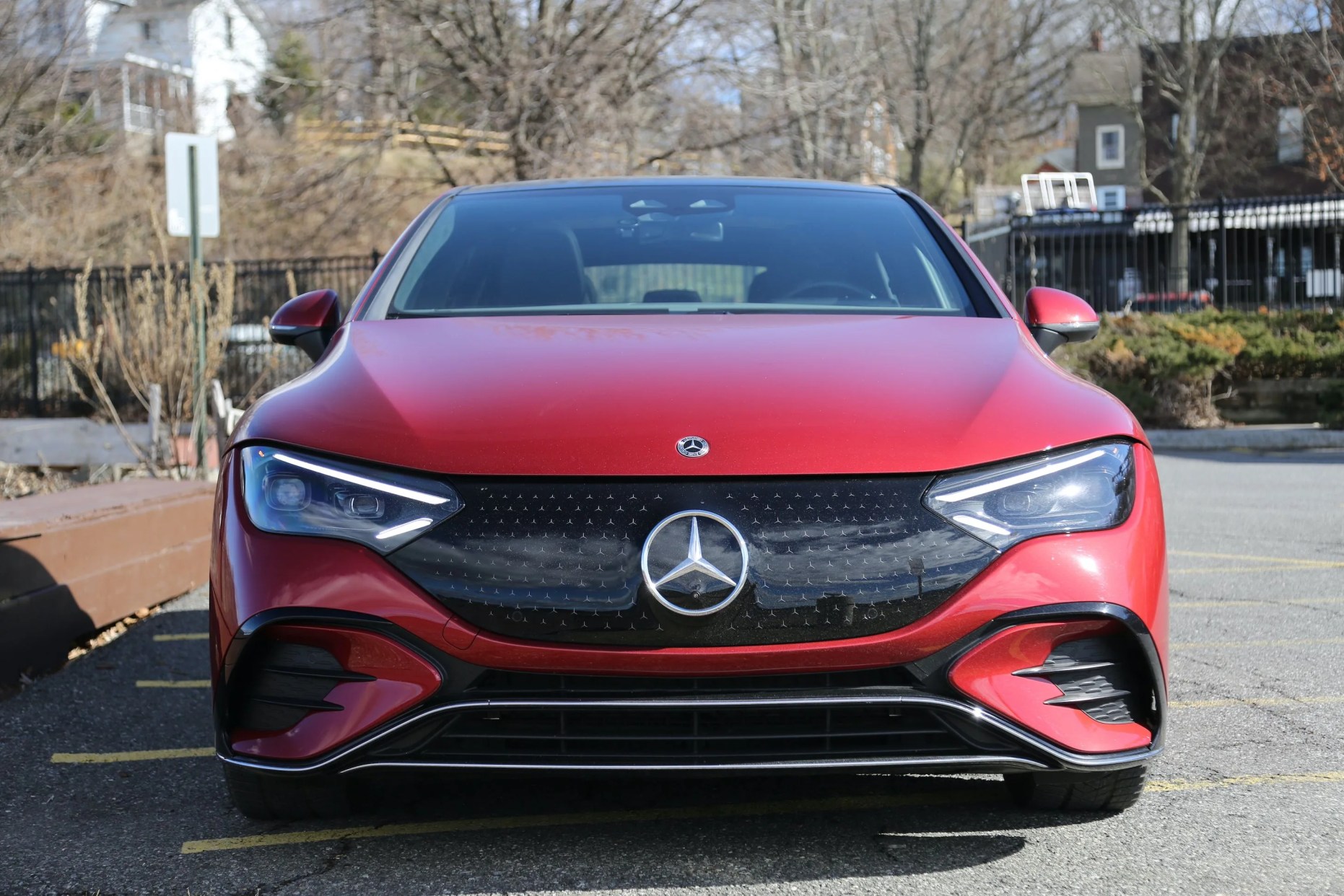Every now and again, I find myself imagining how all those automotive executives, engineers and product planners really feel about the largely-mandated push to move over to electric vehicles over the next decade or so. It’s not hard to think of them ruminating on one of the many iconic lines from Gladiator: Death smiles at us all. All we can do is smile back.
Mercedes-Benz, at least, has certainly chosen to smile back in the face of internal combustion’s Grim Reaper. The German icon has launched an ambitious effort to offer EV equivalents of pretty much all its gas-powered models over the next few years, before ultimately phasing out internal-combustion propulsion altogether by some time next decade (assuming, of course, the buyers go along with this). The brand even has their own separate designation for this new EV family of models: EQ, which, the carmaker says, stands for “emotion and intelligence.” (Yes, it’s a play on “IQ.” Yes, it makes no sense. Just move past it.)
Technically, the first model from the brand was the EQC crossover, but it was — let’s face it — a bit half-baked. The first model that was truly representative of what EQ was meant to be was the EQS, an electric equivalent of the fabled S-Class. While it catered to a limited market — there are only so many people these days who want giant sedans, let alone electric ones — it was followed in short order by a trio of vehicles that offered broader appeal: the EQB, the EQS SUV, and the EQE sedan, with the latter being an electric alternative to the E-Class beloved by lawyers, dentists and other upper-middle-class professionals.
Having driven the E-Class plenty of times and been impressed on each go — there’s a reason it’s our recommendation for best midsize luxury car — and having liked what I saw with prior EQ models, I was keen to test out the EQE and see how this battery-powered mid-market Merc could hold up against both the electric competition and the gas-powered alternatives. Here’s what I discovered.
What’s Good About the Mercedes-Benz EQE 500 4Matic?
 Will Sabel Courtney
Will Sabel CourtneyIt rides and drives like a Mercedes-Benz should
The name Mercedes-Benz connotes certain traits: effortless power, solid build, a smooth yet firm ride ready for the autobahn. The EQE may be a departure in some ways from the cars that established that reputation, but it still delivers those same attributes. It rides smoothly and calmly, delivering a bit of body roll in turns and a dash of understeer when pushed hard but incredibly calm and collected in the sorts of driving that people actually do in the real world.
Note, however, that I specified the EQE rides and drives like a Mercedes-Benz should, not like a Mercedes-AMG. Anyone looking for the harder-edged ride and handling of Affalterbach’s models would be better off looking at, well, an E 53 or an E 63 S (yes, it’s back in stock). Or, of course, waiting a bit for the AMG EQE due to arrive later this year — although if the AMG EQS is any indication, it may still not quite have the edge that -63 buyers have traditionally sought.
Still, the forward thrust of the EQE 500 ought to be plenty enjoyable even to those used to a twin-turbo V8 under the hood. Dual electric motors — one front, one rear — combine for 402 horsepower and an even more impressive 633 lb-ft of torque, and as is always the case with EVs, all that torque comes the instant you flex your right ankle against the pedal we used to call “the gas.” Mercedes claims a 4.5-second 0-60-mph time, and that feels accurate, if not conservative. What the brand doesn’t mention is how, on the roll, you can dart and carve through slower traffic with the sort of responsiveness usually reserved for supercars.











